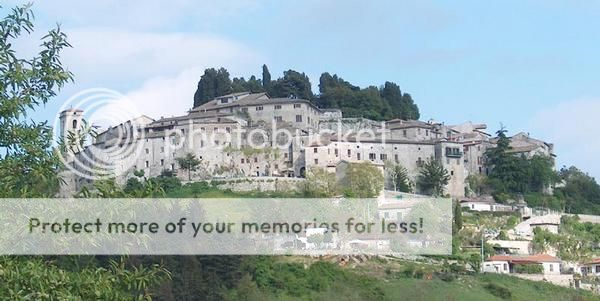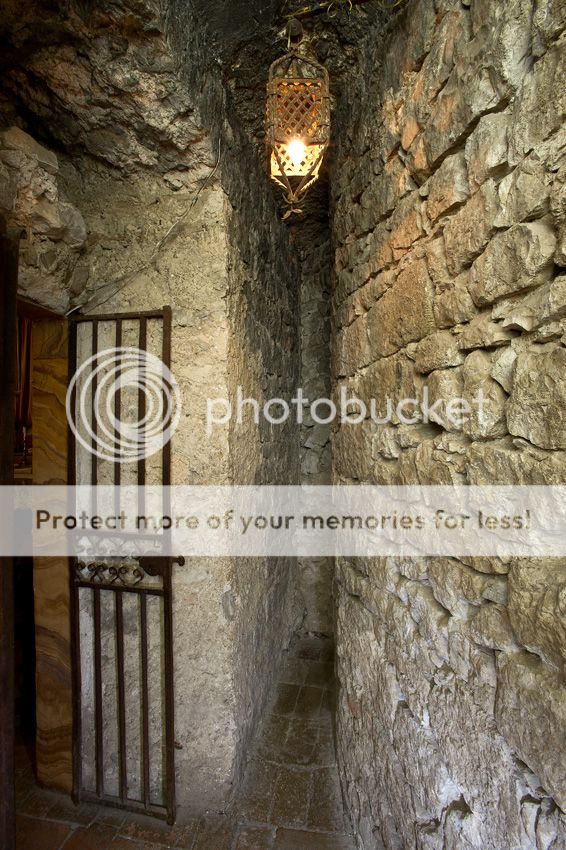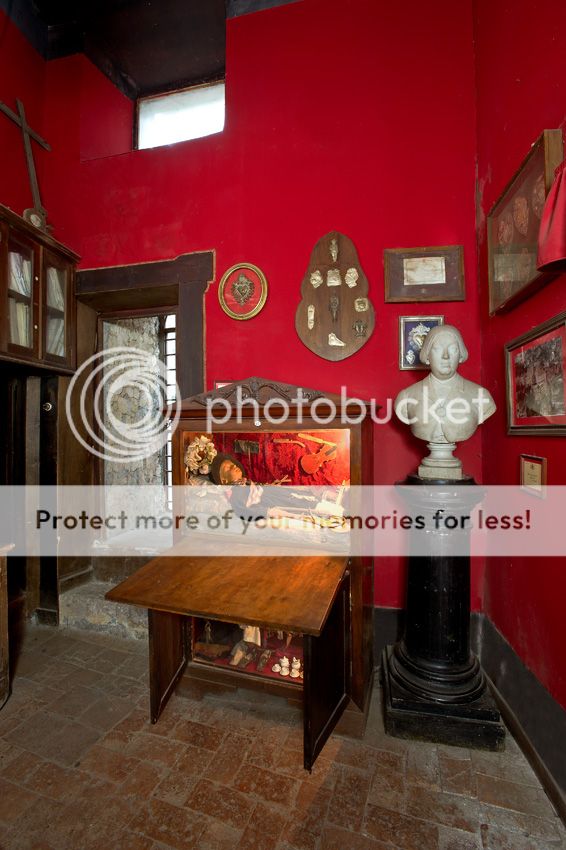-
*Astrella.
User deleted
The Haunted Castle of Fumone

An hour south of Rome, up winding roads through bucolic villages visitors soon find themselves in an area known as Ciociaria. Ciociaria is the name of an Italian region, strategically situated in the heart of Italy, between Rome and Naples. It’s the ideal starting point to explore the whole country. The province of Frosinone, called Ciociaria (cho-cha-REE-a), is not very well known among tourists, because it is “off the beaten track,” but this land generously rewards its visitors with unspoiled nature, magnificent abbeys, archaeological treasures, genuine food and deep traditions. Along the way one passes monasteries where enterprising monks offer serenity and herbal liquors, vineyards abound, and medieval life is recalled. Located in the northern part of this region is the village of Fumone.
Fumone (“big smoke” in Italian) with approximately 2200 inhabitants, has been strategically important since the early Middle Ages when sending smoke signals acted as a warning system to the smaller towns below, and as far away as Rome, that the storming barbarians were coming to town. Through a shroud of mist peeks a castle, which crowns the medieval hilltop town. The town is a journey back in time that is entered through Porta Roma which, walking a slight incline leads to two main “streets” that of course lead off into other smaller “vicoli” or lanes to explore. In addition to the shops, restaurants, churches and various festivals, the town is famous for its castle, whose origins date back to somewhere between 244 and 455 D.C.
The Longhi Castle, as it is actually named, was owned by the Holy See, until it was transferred by Sixtus V in 1586 to the Longhi family. For centuries the castle had two functions. In the eleventh century it was a fortress and in the twelfth it became a prison. Its most famous prisoner was Pope Celestine V who was jailed there after his abdication of the papal throne. Pope Celestine, also known as Pietro da Morrone (1215 – 19 May, 1296), was elected pope in the year 1294, by Papal election, 1292–1294, the last non-conclave in the history of the Roman Catholic Church. In 1294, he abdicated as pope, the first and only one to do so. He left Rome, but his successor and nemesis; Boniface VIII captured and segregated Pope Celestine V from 1295 to May 1296 at the Fumone Castle in a solitary cell. Nowadays it is possible to visit the prison cell where Celestine slept lying on the stones. This cell is annually transformed into a chapel on the occasion of the anniversary of his death, and a funeral service is accordingly celebrated. Despite his abdication as pope and subsequent imprisonment by the papacy, Celestine V is recognized by the Church as a saint. No subsequent Pope has taken the name “Celestine”.

Meanwhile, after the Longhi family received possession, as was common in that period, family inheritance feuds became a way of life. One incident involved the poisoning of the only infant brother by his three sisters, who stood to inherit nothing upon the death of their father. The child’s body lies in a glass lined section of a cabinet in the castle. It is very moving and sad to view his little body along with his clothes and toys that were “buried” with him. It is said his crying and his mothers sorrowful wailing can still be heard in the quiet of the night. The Longhi family is, still today, the owner and the guardian of the fortress. They continue to live in the castle while opening some of the rooms for touring and offering some of the rooms for lodging.

Architecturally a vast medieval fortress with a history spanning over 1000 years, the” Castello di Fumone” has housed knights, popes, generals, occasional intruders of the marauding kind, and Italian royalty who live there to this day.

Tales of intrigue, mystery, and spirituality echo throughout the 70 rooms where you’ll encounter the castle ghosts, the chapel where Celestine V died, the museum section including a Canova sculpture of Paulina Borghese, secret passageways, and a spectacular hanging garden. The garden itself, at 800 meters about sea level, is considered the highest hanging garden in Europe. The lower level of the gardens is available for private parties and the entire gardens, on a clear day, offer a fantastic 360 degree panoramic view of the surrounding towns and a bird’s eye view of the medieval village below.

You too can make your mark and sign the guest book here at the castle when you come for a visit, or you can play queen or king for a couple of days and stay in what were once the knights’ quarters, now turned bed and breakfast.
Castello di Fumone, staggering in its massiveness and authenticity, designed by history and not by Disney, is the real thing.
Source: http://theitaliantribune.com/?p=1058.
The Haunted Castle of Fumone4 Giugno 2013 |


